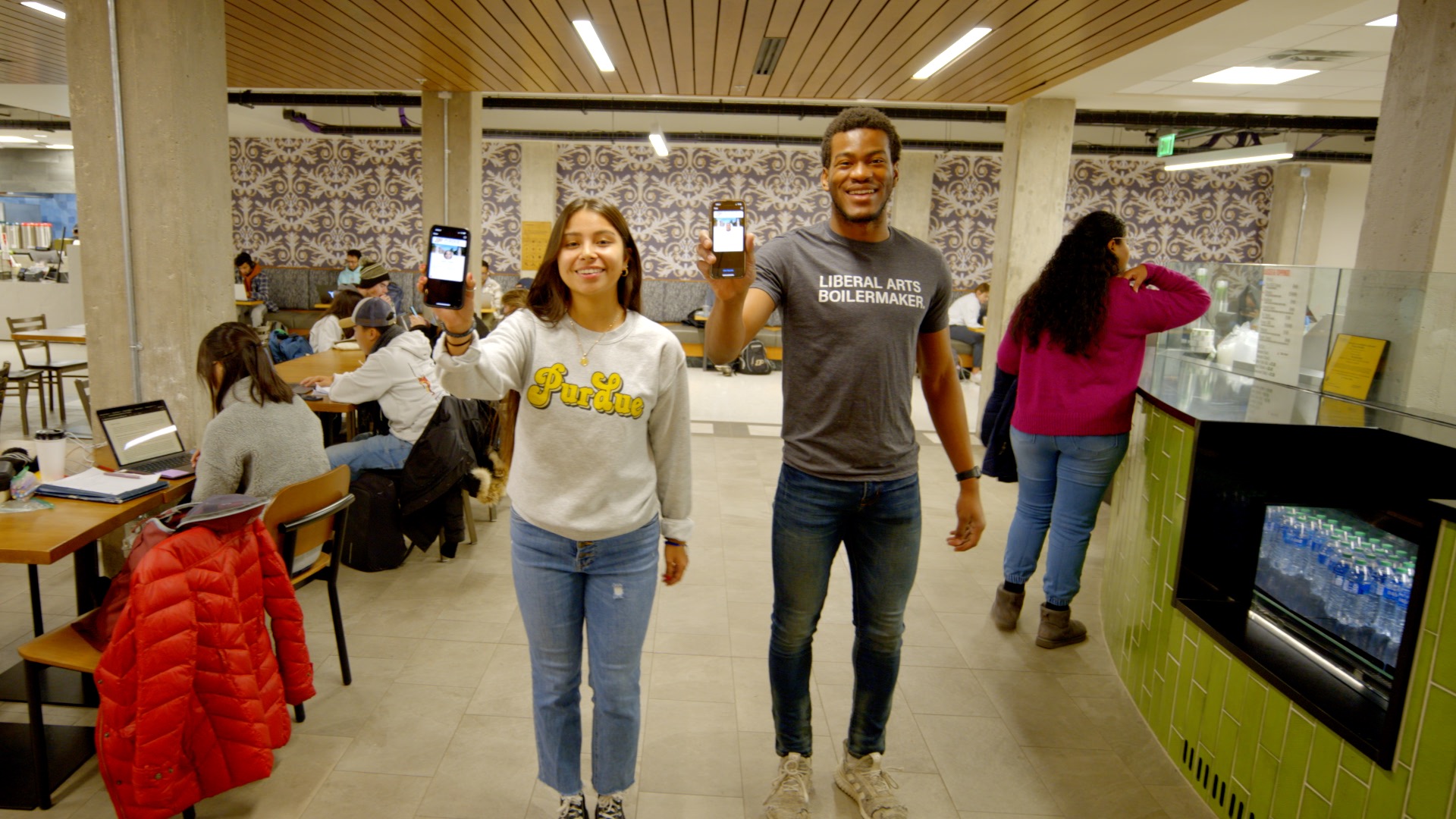

Like anything in the world of information technology, what happens on the surface is only as good as what’s beneath it. That’s where the magic happens. And that’s especially been the case with Purdue University’s launch of an electronic student identification system this spring designed to eventually replace hard-copy IDs.
For Purdue Mobile ID to work as seamlessly as it has since its April debut, Purdue IT teams spent months developing custom-software applications that enable ID card readers to deliver PUIDs safely and effectively to various other applications.
While Purdue Mobile ID is enabled for smartphones, smartwatches and other devices through the Transact Mobile Credentials application, the secret sauce in the custom software marries the device to a destination point downstream for campus units and users.
Because of these innovative software solutions, students are able to use their mobile IDs to access residence halls and buildings, make transactions using BoilerExpress, tap to dine and even pay when doing their laundry.

“Purdue’s deep team of talented IT developers is playing a pivotal role in creating the software solutions that advance our Purdue Mobile ID strategy,” says Loribeth Hettinger, senior associate bursar of ID Card Operations/Support. “As we continually examine how technology can enhance the learning and residential experience of our Purdue students, the support provided by this innovative group will remain a key part of Purdue Mobile ID’s success as we deliver a secure, convenient and efficient mobile credentials system for our campus community.”
Named Tapawingo and Swype, these software applications are making life easier across campus — from simplifying payroll timekeeping for Human Resources’ WebClock and RecWell’s fitness classes such as FusionGo and package pickup through University Residences’ Intra mailroom system to checking in through BoilerConnect for the Disability Resource Center’s many testing centers. Even the basics for checking out books and resources from Libraries are now equipped to use Purdue Mobile ID.
And that’s just the beginning of an innovative technology designed to be ubiquitous someday for student activities all across Purdue’s West Lafayette campus.
Shane Bolton, senior application developer for IT Student Life Solutions, says Tapawingo and Swype use an MDR5 reader device acquired from Transact, connecting to a Windows PC or iPad via a USB or Bluetooth connection. Users can simply tap their Android phone, iPhone or Apple Watch that has Purdue mobile credentials configured in the device’s wallet.
Both Swype and Tapawingo applications use a web application programming interface, known as API, which takes the identifier read from the card or mobile credential and translates it into an official Purdue ID, says Keith Shininger, senior manager of application development for Purdue IT Student Life Solutions. A network connection is required for this process to work.
“The process of getting an ID from tap to translation to use in a destination software system happens in just a second, so use cases like attendance check-in are sped up by letting students tap in compared to other methods of check-in,” Shininger says. “This means faster moving lines and less time waiting.”
Here are additional details of Swype and Tapawingo and information about how they work:
Referencing sample code provided by the hardware vendor, Bolton was able to add a component to Swype to connect to the new MRD5 reader over Bluetooth and read data from it as phones and other mobile credentials were tapped. This, he says, fits right into the existing flow of the app so users would feel familiar with how to use it.
“One key component that enables this to work is our Lookup API,” Bolton says. “The data that comes out of the reader needs to be translated to a Purdue ID before it is passed onto the system that wants to use it. We created the Lookup API to match this data to a user in the Card Office’s Transact database and return the PUID.”
Even during the harried time of the end of the spring semester, specifically the dreaded finals week, users say Purdue Mobile ID was a tremendous help in streamlining check-in processes for tests and other activities as students and faculty wrapped up their 2023-24 school year.
“Our students provided positive feedback of being able to tap their IDs instead of swiping them,” says Kelsey Jordan, testing center manager and assistant director for Purdue’s Disability Resource Center. “It made for an easier check-in process overall, and everything went very well during finals week. Thanks for all the assistance and quick work to get our 14 devices active for us to use during finals week.”
Writer: Phillip Fiorini, pfiorini@purdue.edu
PHOTO CAPTION:
Purdue liberal arts rising sophomore Ohinoiyi David Momoh, left, and Ruby Foster, who will be a sophomore this fall studying film and video production and theatre, show off Purdue Mobile ID, which students can download and use to access doors for residence halls and classrooms, and purchase meals in the dining courts and other items at stores on campus. (Purdue University provided)